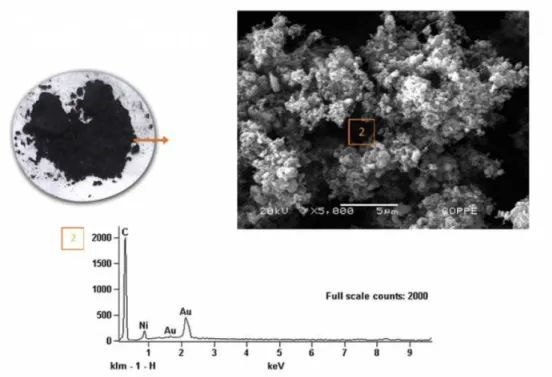ISSN 1517-7076 Editorial, pp. IV-VI, 2015
Advanced Materials for Special Applications
Paulo Emílio V. de Miranda1
1Editor-in-Chief
Materia Journal
e-mail: pmiranda@labh2.coppe.ufrj.br
Scientifically based technological development of new materials has enabled the advent of very speci-fic materials for special applications. One of these applications includes the direct utilization of ethanol as fuel in a solid oxide fuel cell - SOFC. SOFCs are among the most efficient electric energy generators known to date and the use of a liquid fuel, which is easy to store and transport, and is also easily available, is of great interest. However, the use of ethanol in fuel cells usually requires to be previously reformed to produce hydrogen, which, once purified, is used as fuel. The reason for that is that the direct utilization of ethanol as fuel in an SOFC induces the deposition of solid carbon, as a result of ethanol’s pyrolysis at the elevated ope-rating temperature of the fuel cell. The deposition of solid carbon on a conventional SOFC anode fills up its pores, making it difficult for the fuel gas to go through and building up internal pressure, which ends up cau-sing the complete inactivation of the anode and, moreover, of the fuel cell itself. Figure 1 exemplifies this fact for a single SOFC with conventional nickel oxide anode on an yttria-stabilized-zirconia electrolyte – YSZ - that was operated for 200 hours at 950oC. The direct utilization of ethanol as fuel in a SOFC becomes, then, impossible due to the rapid deterioration observed.
That is why a solution was searched that would not require the laborious previous fuel reforming and would allow the direct utilization of ethanol in a SOFC. Preliminary tests were performed with success in a single SOFC having an anode composed of Cu-CeO2-YSZ [2], which did not present significant performance decay after 200 h of operation with the direct utilization of ethanol as fuel.
Also, an innovation was created in this area in 2009 [3] and subsequently unveiled in the scientific literature [1, 4], by using the CeAlO3 phase as new material for SOFC anode. The development of such a new material for SOFC anodes made the operation of the fuel cell possible at 950oC during 200 h with the direct utilization of ethanol with no significant performance loss or carbon deposition that would inactivate the device, as de-picted in Figure 2. In this case, the ceramic electrocatalist was synthesized by the amorphous citrate method. The synthesis procedures were designed to produce nanometric sized powders for which the calcination con-ditions were selected in order to fulfill requirements such as ease to be sintered; formation of selected phases upon calcinations at different temperatures; particle size control; surface area and morphology well suited for the production of ceramic suspensions to be processed into an SOFC functional anode. The main results have shown that [4] calcination under an oxidizing atmosphere induces the CeAlO3 phase with a tetragonal pe-rovskite type structure to undergo a phase transformation to CeO2, with cubic fluorite type structure, and Al2O3. However, the structure is able to be reversed and reduced back to the CeAlO3 phase if calcined under a hydrogen atmosphere.
As a result, the controlled synthesis of the new advanced ceramic material [3, 4] and its incorporation into a ceramic suspension that allows the fabrication of the functional anode was successfully used in the special application that involves the direct utilization of ethanol as fuel in an SOFC with adequate performance [1]. This was possible because the anode microstructure was not seriously affected by the direct use of ethanol, showing good stability and resistance to coking, carbon clogging and cracking.
The journal Materia is receptive to publish reports on new materials developments that may open new appli-cations for engineering devices.
Figure 1: Macroscopic aspect of a single SOFC with conventional anode of nickel oxide on yttria stabilized zirconia
electrolyte operated for 200 h with the direct utilization of ethanol as fuel at 950oC, at the left hand side, where intensive carbon precipitation is observed, also appearing on the scanning electron micrograph shown on the right hand side and that is identified by a high intensity carbon peak in the dispersive energy spectroscopy chemical analysis shown below [1]. (adapted from [1], with permission from Elsevier).
Figure 2: Macroscopic aspect of a single SOFC with functional anode of CeAlO3/CeO2-Al2O3 on yttria stabilized
zir-conia electrolyte operated for 200 h with the direct utilization of ethanol as fuel at 950oC, at the left hand side, where a sound anode with no solid carbon precipitation is observed, as shown by the scanning electron micrograph shown on the right hand side and that is characterized by a low intensity carbon peak in the dispersive energy spectroscopy chemical analysis shown below [1]. (adapted from [1], with permission from Elsevier).
BIBLIOGRAPHY
[1] VENÂNCIO, S. A., MIRANDA, P. E. V., “Solid oxide fuel cell anode for the direct utilization of ethanol as a fuel”, Scripta Materialia, pp. 1065-1068, 2011.
[2] VENÂNCIO, S. A., GURIERRES, T. F., SARRUF, B. J. M., MIRANDA, P. E. V., “Direct oxidation of ethanol in an SOFC anode”, Matéria, v. 13, n. 3, pp. 560-568, 2008.
[3] MIRANDA, P.E.V., VENÂNCIO, S.A., MIRANDA, H.V., “Process for the direct oxidation and/or inter-nal reforming of ethanol, solid oxide fuel cell used for the direct oxidation and/or interinter-nal reforming of etha-nol, catalyst and multifunctional anode electrocatalyst for the direct oxidation and/or direct internal reforming of ethanol”, INPI Patent no. PI0901921-9, June 17th, 2009.
[4] VENÂNCIO, S. A., MIRANDA, P. E. V., “Synthesis of CeAlO3/CeO2-Al2O3 for use as solid oxide fuel cell functional anode material”, Ceramics International, v.. 37, pp. 3139-3152, 2011.
